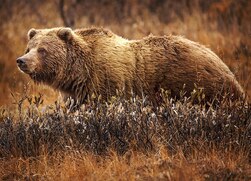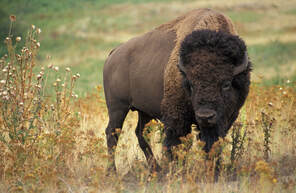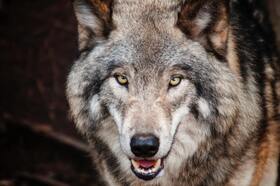 Wikipedia Wikipedia One of the absolute American treasures is Yellowstone National Park! Since 1979 Yellowstone averages about 3-4 million visitors a year. People come from all over the world to marvel at such sites like Old Faithful, Mammoth Hot Springs, Yellowstone Lake, and Grand Prismatic Spring, etc. But the main attraction for most is the wildlife that roam free within the park! Year after year campers, hikers, tourists, etc. feel the need to come face to face with animals living in the wild and it sometimes does not end well. Let us break down the numbers based on types of animals involved and here are tips to keep you and your family safe while visiting the true Merica’ Marvel. Grizzly Bear: Since 1979, more than 118 million people visited Yellowstone National Park. During this period, 44 people were injured by bears in the park, according to park numbers. As recently as April a lone hiker was attacked by a grizzly and seriously injured. He died a day later after he suffered a stroke following surgery. While he had bear spray with him, it was not clear if he had time to use it. Investigators who went to the site the following day were charged by an older male grizzly. After all members in the group hazed the bear and it failed to stop, the bear was killed. In 2011 two hikers were mauled to death by a Grizzly. Even more recently, two more people in 2013 survived attacks by grizzlies in the park. And, in August of 2015, a knowledgeable hiker was killed in the backcountry. In the later, there were reports of a grizzly with a cub in the area. However, in the entire 142- year history there has only been 8 total deaths in Yellowstone credited to Grizzly Bears but seems like human traffic in the park is increasing so are the number of attacks which is around 2 per year since 1980. Tips To Avoid a Grizzly Bear Attack:
 Wikipedia Wikipedia Bison: Easily the most visible animal and they are remarkably huge! Because of their docile demeanor people feel the need to get extremely close to these animals for that ever so popular selfie! Of the 56 injuries recorded over the last 15 years, 80% of them were because people approached the animals causing it to charge. Last year a 72 year old woman (full story click here) was gored in an attempt to take up close photos of a bison. She was flown to an Idaho hospital where she survived her injuries but it was reported she was less than 10 feet from the animal multiple times. Tips To Avoid Bison Attacks:
 Wolves: There has not been any attacks recorded on wolves since the reintroduction of wolves in the park. This can be attributed to a target rich environment wolves have with Elk, Deer, and other animals that are heavily populated in the park. However, wolves do pose a risk so proceed with caution and keep your distance. Loomacres - 800-243-1462 Bringing Wildlife Management to a Higher Level ©
0 Comments
Leave a Reply. |
Sales & Marketing
|
 RSS Feed
RSS Feed